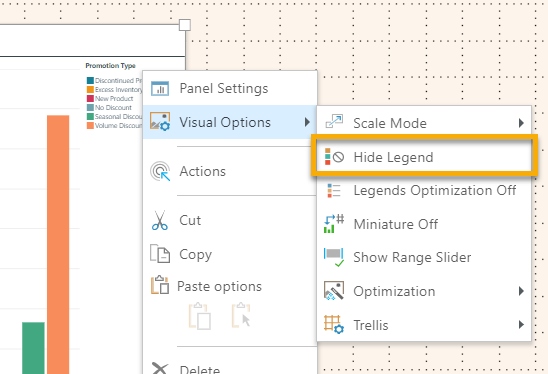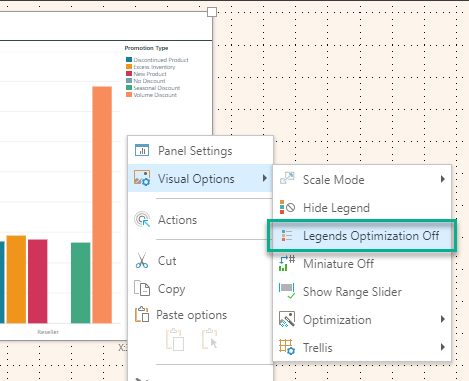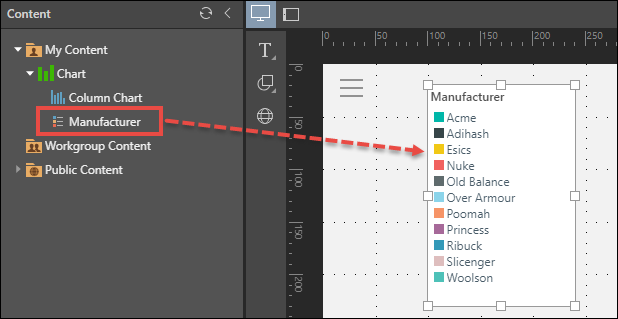When adding a visual that has a legend, that legend can be added either within the visual container, or separately as a standalone legend. You can then show or hide legends in the visual, change the panel style for standalone legends, and adjust the formatting of the legend content and title as needed.
Show or Hide Legends
When adding a visual that contains a legend, the legend will appear within the visual's container. There are two ways to show or hide a legend in the visual container:
- Right-click the visual and select Visual Options > Hide Legend from the context menu:
- Toggle the Legend button in the Visual tab in the Component ribbon:


Legend Optimization
Legend Optimization is enabled by default on visuals containing a legend. It ensures that Pyramid automatically optimizes the legend size and position when the visual is resized.
Legend Optimization can be enabled or disabled by toggling the button from the visual's context menu (green highlight below):

Standalone Legends
Chart legends are displayed in the content tree as a component of the visual file containing the legend. To add a standalone legend, expand the visual file in the content tree to reveal its components, then drag the legend item onto the canvas. Resize the standalone legend as required.

Panels
Panels are the containers used to "frame" your visuals in Present and Publish. If you're working with standalone legends, you can customize the legend panel separately from the visual it is associated with.
Formatting
Formatting for standalone legends can be set from the component ribbon while the legend is selected. As usual, you'll be able to adjust the panel settings, scale mode, and background color.
You can also set formatting for the legend content and the legend title:

Legend Content
Use these settings to apply formatting changes to the list of elements in the legend.
- Font: Set the font type, size, color, emphasis, and alignment for the legend content (not the title). These standard text formatting options are described in Text Formatting.
- Layout: These options are supported for discrete legends only; they do not appear when working with continuous measure legends.
- Auto: displays the legend contents in a single column.
- Fixed: manually set the number of columns into which the legend elements will be divided.
- Wrap: arranges the legend content into the appropriate number of columns for the size of the container.
Legend Title
Use these settings to apply formatting changes to the legend's title.
- Font: set the font type, size, color, emphasis, and alignment for the legend title.
- Title Position: change the position of the title.
- Auto: let Pyramid position the title automatically.
- Horizontal: position the title horizontally along the first line of the legend's elements.
- Top Start: the title will be above the legend's first line of elements, on the left side.
- Top Center: the title will be above the legend's first line of elements, in the middle.
- Top End: the title will be above the legend's first line of elements, on the right side.
- Legacy: apply legacy position from BI Office.
Example: Legend Formatting
In this example, legend content is split into two fixed columns, and italicized. The legend title is centered and made bold:
